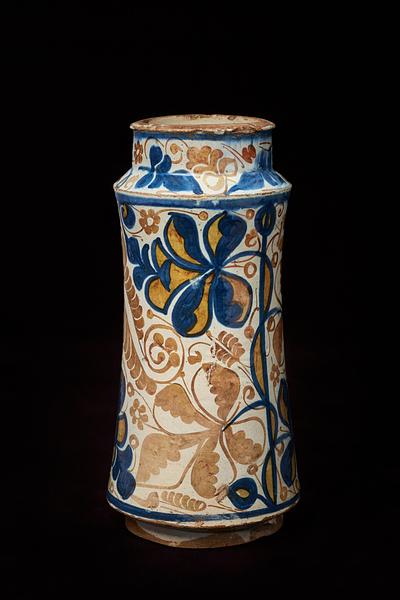Earthenware albarello, painted in blue in, and with two tones of lustre over, an opaque, white glaze
Manises, Spain; 1st half of 15th century
H: 29.5 cm
Both faience and the lustre technique reached Muslim Spain from Iraq by way of Egypt. In the middle of the 13th century, high-quality lustreware was made in Malaga, from which it spread with Muslim craftsmen to Christian Spain. This “Spanish-Moorish” pottery was exported e.g. to Italy, where it was called majolica or faience, after the island Mallorca and the town of Faenza.
A jar with concave sides is called an albarello, probably from the Spanish-Arabic word al-barrada – a jug. The type was most often used in pharmacies, since the shape made it easy to grasp the jars even when they stood in lines.
Inv. no. 14/1990
Published in:
Hotel des Ventes de Lyon, 12/6-1990, lot 3;
Kjeld von Folsach, Torben Lundbæk and Peder Mortensen (eds.): Sultan, Shah and Great Mughal: the history and culture of the Islamic world, The National Museum, Copenhagen 1996, cat.no. 200;
Kjeld von Folsach: Art from the World of Islam in The David Collection, Copenhagen 2001, cat.no. 112;
Sheila S. Blair and Jonathan M. Bloom (eds.): Cosmophilia. Islamic Art from the David Collection, Copenhagen, McMullen Museum of Art, Boston College, Boston 2006, cat.no. 90;
